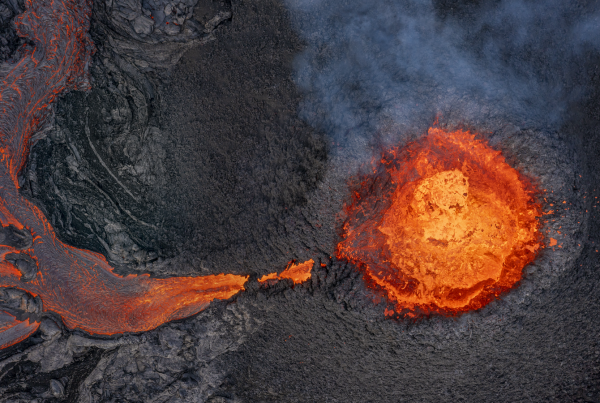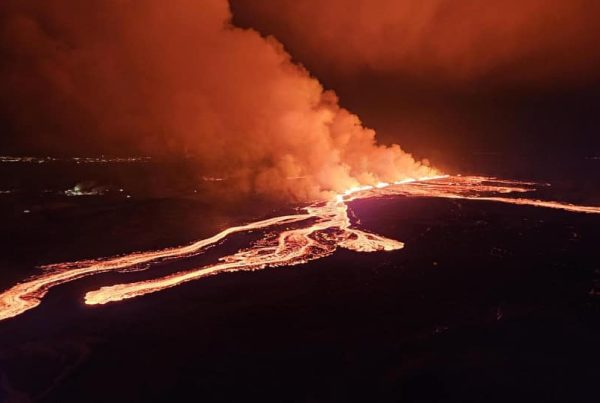
This image of the craters before, captured during an aerial survey conducted by the Icelandic Institute of Natural History in the morning of March 20.
The volcanic activity at the Sundhnúkagígar eruption site saw a decrease overnight on March 25. Cameras monitored by the Icelandic Meteorological Office’s nature hazard specialists show a reduction in intensity. The eruption, which had been consistently powerful for days, now shows most of its activity concentrated in the two largest craters.
There has been some air pollution detected in nearby populated areas, prompting the Meteorological Office to advise residents to stay alert, close windows, and minimize outdoor activities if they are sensitive to air quality. Concerns had risen that the lava might surpass the protective barriers, leading to efforts to raise them. By the 8th day of the eruption, the lava flow seemed to have slowed.
As of the morning of March 25, possibly one or two craters have been extinguished, but four continue to erupt. This marks a continued but reduced volcanic activity, primarily from the two largest craters, which are now erupting with less force than before, according to Elísabet Pálmadóttir, a nature hazard specialist at the Icelandic Meteorological Office.
The situation remains stable, with drone images from the evening showing the lava edge southeast of Hagafell as the only part still advancing. The lava flow heading towards Grindavíkurvegur appears to have halted after reaching Melhólsnáma, with no activity towards Suðurstrandarvegur either.
Despite this decrease in activity, the eruption’s intensity remains steady on its eighth day, with lava continuing to flow north and east of Grindavík. Nature hazard specialists continue to monitor the situation closely, indicating that, for now, there is no sign of a decrease in activity.
This isolated event in the Sundhnúkagígar area poses no major threat, and Iceland remains a safe destination for visitors. The Icelandic authorities are experienced in managing volcanic activities and ensuring public safety.
Please follow the updated volcano info site at Visit Iceland for further information.



